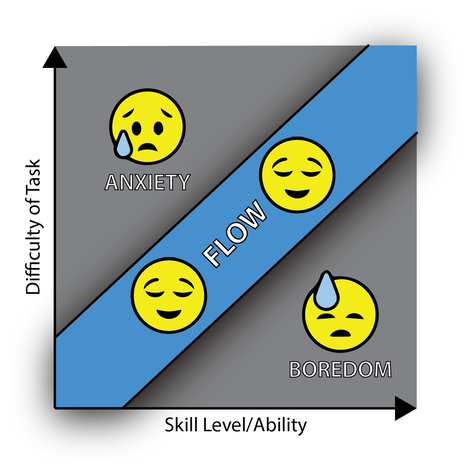|
This is a topic I have written about before, but I find that as I develop greater understandings of my field it becomes necessary to revisit what it is I am passionate about. First and foremost let me say this: I am passionate about education. But what does being passionate about education really mean? Am I equally passionate about ALL education? No. While I think all education is important, there are certain aspects of education that I am more passionate about in general than others. For example, my background is High School and College English Language Arts (ELA) Education and I’m therefore much more passionate about it than I am say Elementary Social Studies Education. However, I am not devoid of passion for Elementary Social Studies Education. This assessment tells me that I am passionate about education in general. About education’s principles and techniques, its practitioners and its participants, which leads me to another question. What specifically am I passionate about within the realm of education? This question take me back to a conversation I had with Professor Russell Greinke, in the East stairwell between the 2nd and 3rd floors of the Martin Building at the University of Central Missouri. It was here that I first used the word “edutainment” to describe one of the goals I had for my (then) future classroom. Today, I find that the goals for my classroom are not much different. I am still passionate about finding better ways to engage learners within the classroom setting. However, unlike the 2008 pre-service teacher version of myself who was talking to Dr. Greinke in the stairwell, I now have a deeper understanding of how such engagement can be accomplished, and the answer for me is Blended Learning. For me, blended learning holds the key to how we can better engage the students of 21st century classrooms. Blended learning combines the traditional face-to-face modality of education with the technological affordances of an online learning system. Through blended learning, teachers can create more easily accessible and available content for their students; they can make help (both general and personal) more available to students both inside and outside of the classroom; they can provide ALL students with a forum to present and share their ideas; they can obtain data that helps them to track student progress, effort, and achievement in REAL TIME; they can engage students using a variety of teaching tools and applications; and they can allow students to learn at their own paces, in various places and times throughout the course. This is something my own students could have benefited from when I was teaching high school and college ELA. When I was teaching ELA, I served students whose ability level ranged anywhere from reading below a 7th grade level to reading above a collegiate level (according to the Scholastic Reading Index). When this was the case, I could not easily provide each student with the personalized instruction that would help them improve their skills. So, I did what teachers have seemingly done traditionally - I taught to the middle of the class, or more exactly, to where students should have been for their respective grade level. While I found that this was an effective practice, it did not seem to be the MOST effective practice. The result of me teaching to the middle was that my high achieving or advanced skillset students were often bored, and my low achieving or remedial skillset students were anxious concerning what I was asking them to do (see the Flow Theory Chart below). The average skillset students had the best opportunities to be engaged in the tasks of the classroom. I wish I would have had the knowledge and technology to have blended my classroom practices, so that I could engage all levels of learners with tasks that had the appropriate of difficulty for them. If I did, I think I could have created a greater sense of flow for all of my students (and by doing so better engaged them in their learning). So, what’s next? As Dr. David Wiley once told me, “Anecdote is not singular data.” I would like to complete research and share my ideas with others to determine whether or not my beliefs concerning the lack of flow and the abundance of anxiety and boredom in classrooms is universal. If my experiences are universal, then I can begin to look into ways in which blended learning can foster flow in classrooms. My hope is that I can be a catalyst for change in improving face-to-face pedagogical practices by incorporating blended learning systems into such contexts. This is my passion.
I want to help students learn better and have better educational experiences. To accomplish this goal, I want to help teachers teach better, and one way of doing so is by helping them personalize their instruction to ALL of the students they serve. I want to help revolutionize the twenty-first century classroom. There are many platforms available to public school teachers to help them provide students with an engaging 24/7 learning platform via blended learning. However, teachers need to understand the benefits of doing so, and how to overcome the accompanying costs. Helping teachers understand these principles will hopefully persuade them to adopt blended learning as part of their 21st century pedagogy. Improving teacher pedagogy to better engage students is my passion.
0 Comments
Your comment will be posted after it is approved.
Leave a Reply. |
About
This blog presents thoughts that Cecil has concerning current projects, as well as musings that he wants to get out for future projects. For questions or comments on his posts, please go to his Contact page. Archives
April 2024
Tags
All
|


 RSS Feed
RSS Feed
